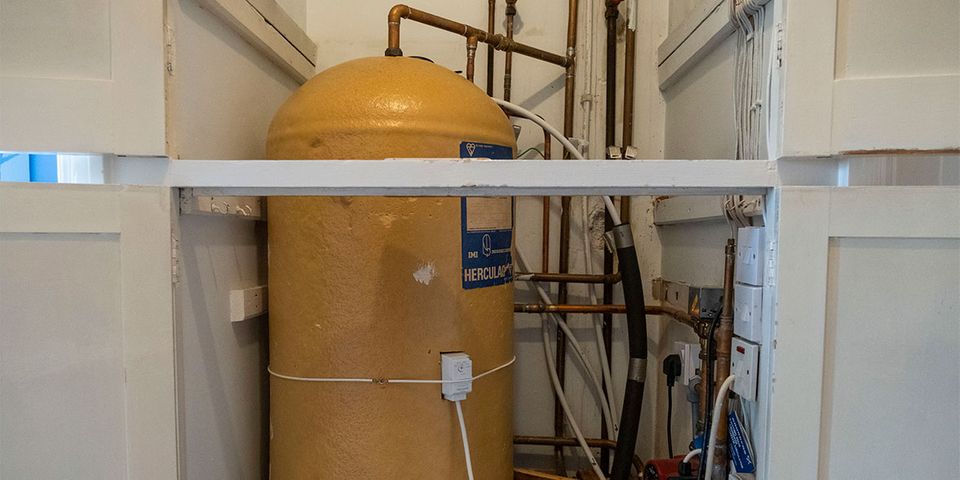Understanding Immersion Heaters: A Comprehensive Guide

Understanding Immersion Heaters: A Comprehensive Guide
An immersion heater refers to an apparatus that is fixed in a tank or a container for heating liquids. They are broadly employed across various fields and sectors, and homes, because of their robustness and efficacy. Wider details of immersion heaters are. So, there are numerous types of immersion heaters and they are used in various applications, several other components of immersion heaters include – an immersion heater thermostat, immersion heater timer, and the immersion heater element.
What is an Immersion Heater?
An immersion heater can be described as a heating appliance made of electrical coils that are directly immersed into the liquid to be heated. So, it can be over-the-side, flanged, or threaded from or for the type of installation and the container in use. So, an immersion heater are ideal for applications where the liquids are clear or slightly corrosive and require heating between 60°C and 250°C depending on the need.
Types of Immersion Heaters
Over-the-Side Immersion Heaters
- Installation: Mounted on the side of the tank.
- Application: Makes use in tanks that do not have an opening area or where the situation is temporary.
- Advantages: Fits passed from the spinal cord into the head area thus is easy to install and remove.
Flanged Immersion Heaters
- Installation: Bolted to a tank or vessel using a flange.
- Application: Common in industrial applications for heating large volumes.
- Advantages: Provides a secure and leak-proof installation.
Threaded Immersion Heaters
- Installation: Screwed into a threaded opening in the tank.
- Application: Suitable for smaller tanks and vessels.
- Advantages: Simple installation and replacement.
Key Components of an Heater
Immersion Heater Element
The immersion heater is a heater that is immersed in a container in order to heat the liquid inside through the heater element which is the main component that causes the transformation of electrical energy into heat energy. This is commonly fabricated using copper or stainless steel or Incoloy which is used due to its efficiency and endurance.
Immersion Heater Thermostat
They are further controlled by an immersion heater thermostat which regulates the amount of power that is supplied to heat the element and thereby regulate the temperature of the liquid. So, this ensures that the liquid can achieve and sustain the required temperature for use or storage as may be appropriate.
Immersion Heater Timer
An immersion heater timer is an accessory used in the heater that enables users to set the time that the heater is supposed to function. So, this feature is useful in power saving and to guarantee that only the heater section of the unit is operating.
Applications of Immersion Heaters
- Industrial: Used in manufacturing processes, chemical tanks, and food processing.
- Domestic: Common in water heaters, aquariums, and brewing.
- Commercial: Great for use in heating cleaning solvents, oils, and other liquids in various industries.
Steps to Install an Immersion Heater
- Select the Heater: The method can also be classified as over-the-side, flanged, or threaded depending on the type of the tank and the specific use.
- Prepare the Tank: Make sure the tank is free of dirt and has apertures that would enable the installation of the float switch.
- Install the Heater:
- For over-the-side heaters, mount it securely on the tank’s side.
- For flanged heaters, bolt the flange to the tank opening.
- For threaded heaters, screw the heater into the threaded opening.
- Connect the Thermostat: Attach the immersion heater thermostat to regulate temperature.
- Set the Timer: If using an immersion heater timer, set the desired operation times.
- Power Up: Connect the heater to the power supply and test its operation.
Comparison Table: Types of Immersion Heaters
| Type | Installation | Application | Advantages |
|---|---|---|---|
| Over-the-Side | Mounted on side | Tanks without openings | Easy to install/remove |
| Flanged | Bolted with flange | Industrial, large volumes | Secure, leak-proof installation |
| Threaded | Screwed in opening | Smaller tanks and vessels | Simple installation/replacement |
Frequently Asked Questions (FAQs)
Q1: What liquids can an heater heat?
A: Immersion heaters are most suitable for clean water and non-corrosive liquid that are non-hazardous.
Q2: How do I choose the right heater?
A: Consider the type of liquid, tank size, required temperature range, and installation method (over-the-side, flanged, threaded).
Q3: Can I use an heater in a corrosive environment?
A: Incorporation of stainless steel or Incoloy elements is advisable for tank cleaning solutions for corrosive tanks.
Q4: What is the purpose of an immersion heater thermostat?
A: A thermostat is used to control the temperature by making certain the liquid reaches the set temperature without fear of boiling over.
Q5: How does an immersion heater timer help in energy conservation?
A: As shown, through managing time and setting some particular periods of operation the use of the timer. So, its helps to save energy and therefore results in reduced costs.
Conclusion
An immersion heater is an exemplary approach to heating a stable in diverse situations and is the most efficient. As a result of this, knowledge on the various types of heaters, major components and modes of installation of the different heaters will guide one in the right choice to make. So, whether you require water heating for use in the home or for industrial use or need to maintain temperature consistent in industrial processes. So, an heater that is fitted with a thermostat and timer is a product that will give you reliability and efficiency.








